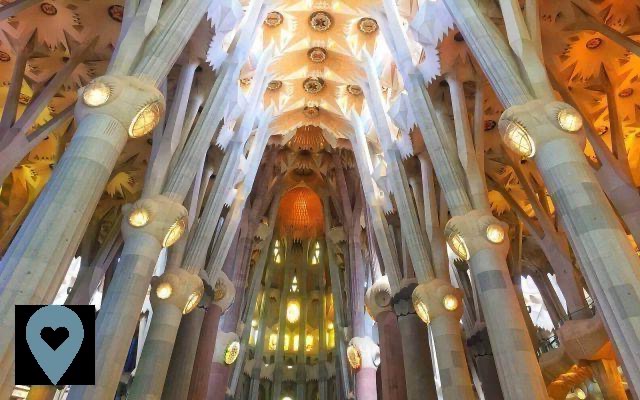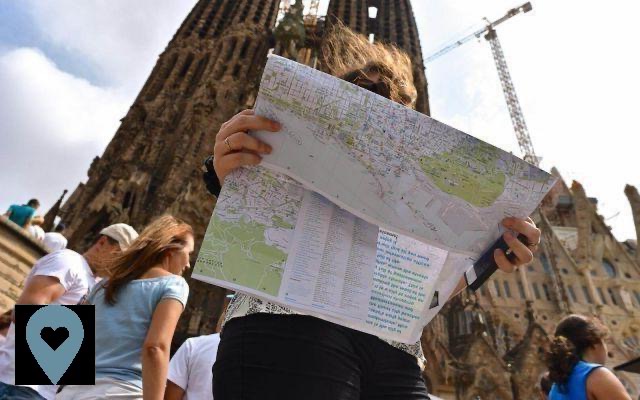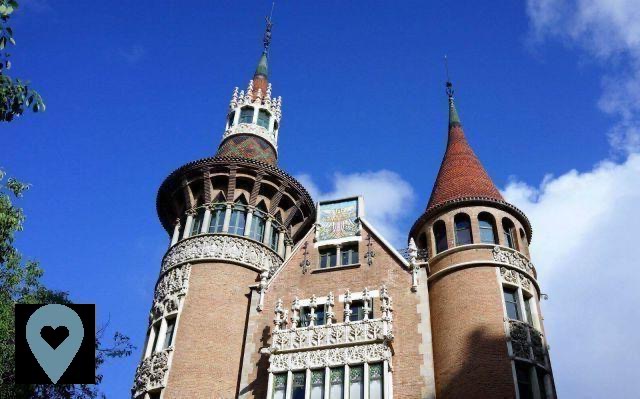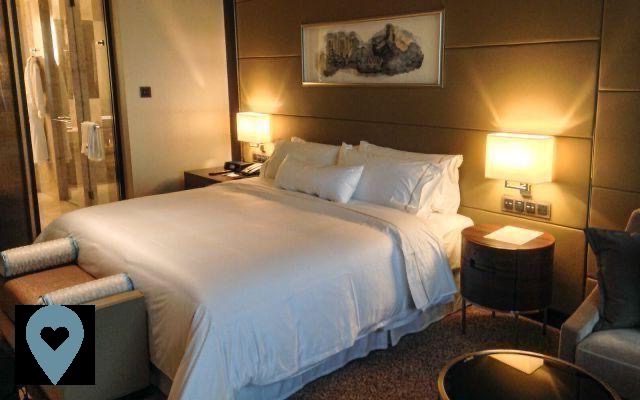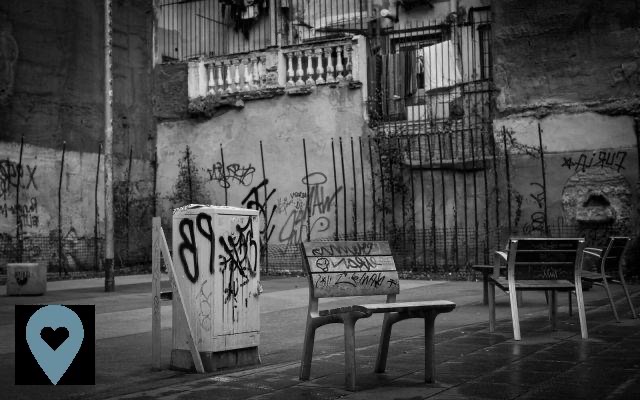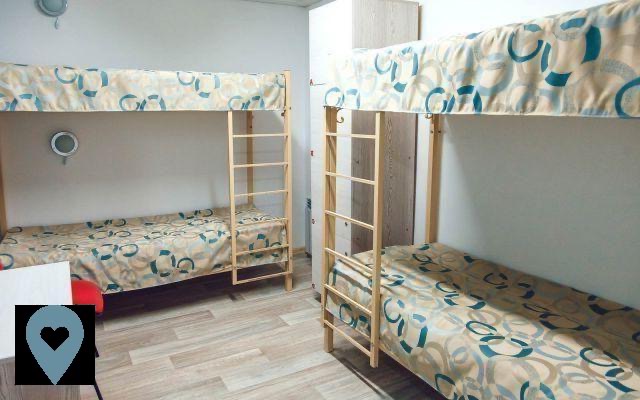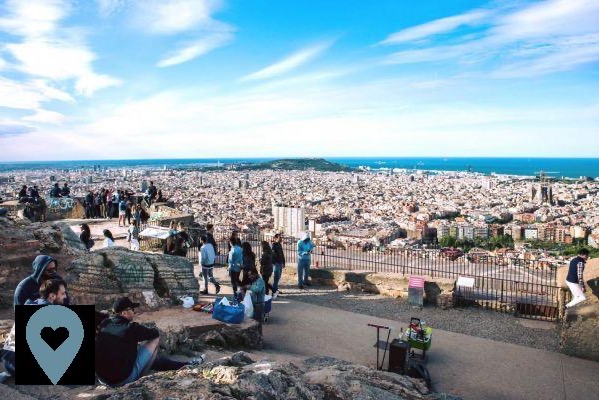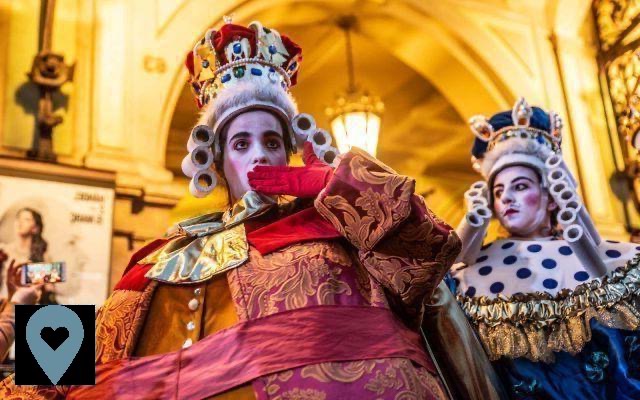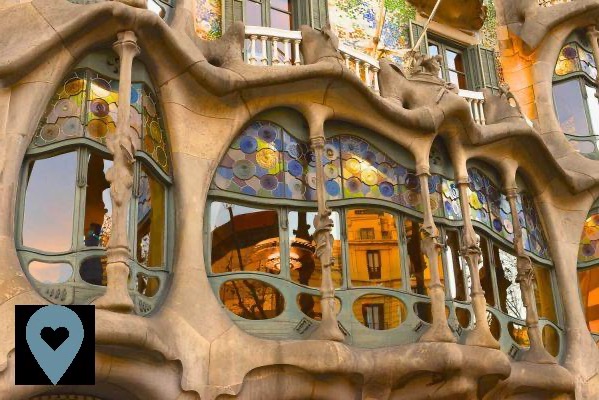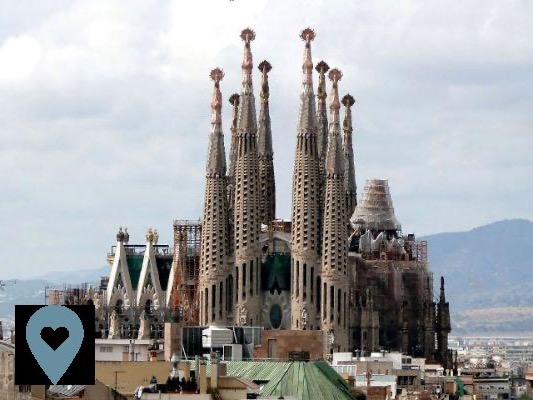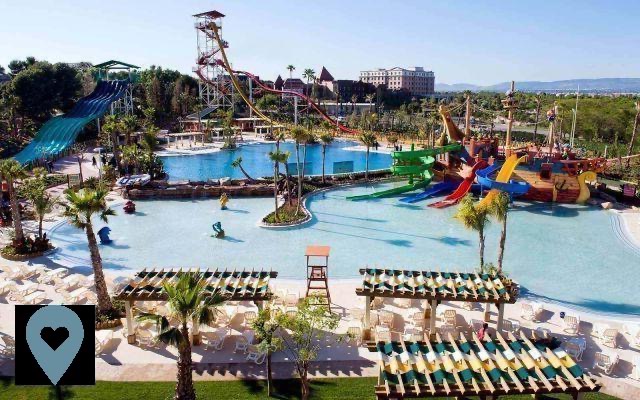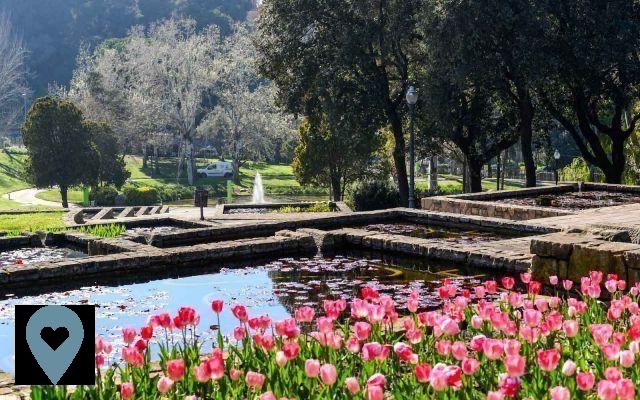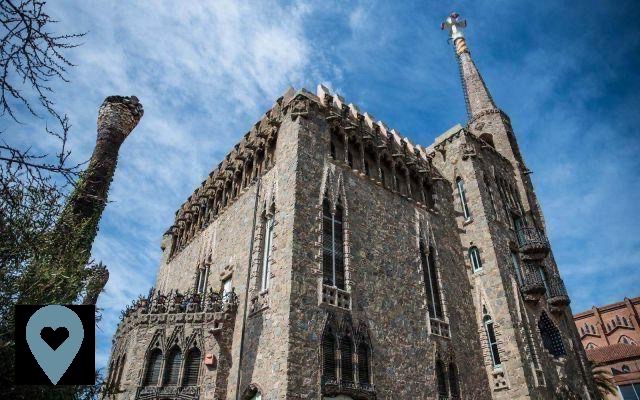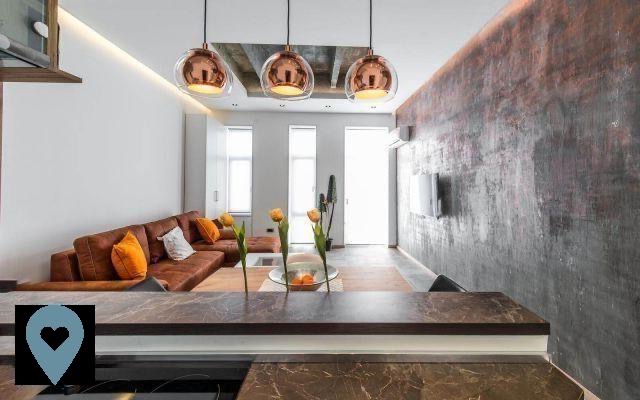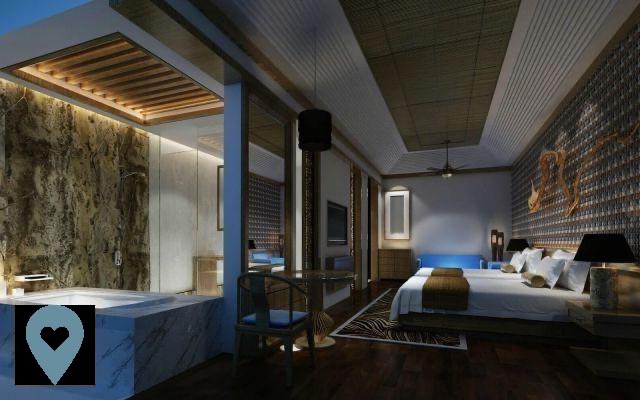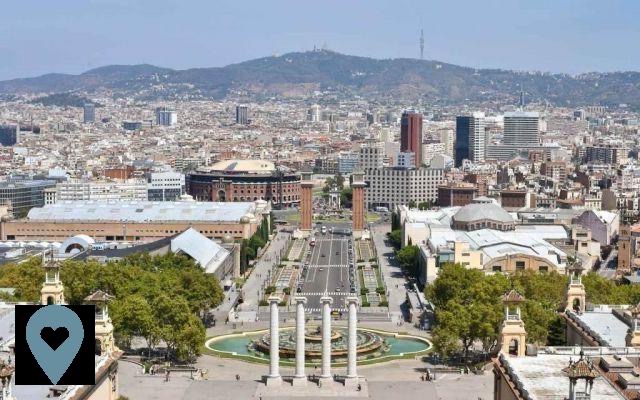

One of my favorite things to do in Barcelona is to look up the fascinating modernist buildings in the city and the adjectives to describe them: majestic, morbid, eccentric and how many more?
Today we are going to talk abouthopital of San Pablo, the old city hospital and one of the most complex modernist buildings in Europe.
It was here that light and art helped rehabilitate the sick: revolutionary things! This masterpiece of local legend, the architect Montaner, it will transport you to the past.
And I have all the information for you on how to visit it, ticket prices, opening hours and much more.
Hospital Sant Pau Barcelona: its history
This great old hospital called Recinte Modernista de Sant Pau (full name: Hospital of Santa Creu i Sant Pau) is actually the largest modernist complex in Europe.
It was built between 1901 and 1930, later declared Unesco world heritage in 1997.
As mentioned, it was the masterpiece of local Catalan architect Lluís Domènech i Montaner, the mastermind behind other incredible Barcelona attractions such as a music lover's dream: the Palau de la Música.
Aside from the genius local architect Antoni Gaudi, there is probably no more important player in the game.
Domènech i Montaner conceived the Hospital de Sant Pau as one urban garden with modern town: streets, pavilions, even a church and a convent. Everything would be connected by underground passages so as not to disturb theaesthetic harmony of the complex.
The area is just an explosion of colors and ornaments - a real feast for the eyes, which begs the question: why can't all medical facilities be like this?
The Hospital de Sant Pau was built on the foundations of a old religious hospital dating from the late 800s. In total, the hospital was the convergence of 6 small medieval hospitals and was officially founded in 1401.
As Barcelona became the industrial engine of Catalonia, the city needed a new hospital and the district called Guinardó (at that time isolated from the rest of the city) was perfect due to its low height and remoteness from the most populated areas of the city. city. city during epidemics.
He is the queen's banker Pau Gil, who donated a considerable fortune upon his death in 1896, which allowed the city to move forward with its new modernist hospital. Domènech i Montaner has been appointed responsible.
Although construction began in 1905, it was not inaugurated until 1930 due to lack of funds and problems with the local bishop. Of the 48 pavilions planned, only 27 have been built.
The Modernist Recinte ceased to be an operating hospital in 2009.
The set that we enjoy today is the result of surprising restoration work carried out in recent years, which has given a museum and a cultural center Extraordinary.
And although Barcelona is rich in modernist attractions like Casa Batlló and La Pedrera, this hospital is still worth a visit.
Let's go!
Visit Sant Pau Hospital
The Hospital de Sant Pau is an eclectic mix ofneo-Gothic influences, where bricks, tiles, mosaics and stained glass create an ornamental richness that is difficult to match.
You may be so lost in beauty that you forget the doctors and think that the resort art itself could heal the sick!
The visit begins in the large main courtyard that consists of of the large "V" -shaped buildings that almost form arms to receive patients in the hospital.
Le simétrico building It surrounds two streets that run from north to south and from east to west.
On both sides you will find different buildings dedicated to different areas of medicine, all isolated from each other and with one or even two basements to prevent the spread of diseases.
The connection between the different buildings of the Sant Pau Modernist Campus is made through a series of underground tunnels partially open to visitors.
Inside you will also find two huge gardens intended for the cultivation of flowers and air purification.
Domènech i Montaner would be more interested in the beauty of the complex than in its functionality as a hospital and, therefore, would have underestimated many structural issues: therefore, many buildings had to be restored.
You visit the Hospital of the Holy Cross and Saint Paul
Any in-depth visit includes a visit to the three main buildings including operating rooms, recovery rooms and more.
Le San Salvador Pavilion is a reconstruction of the history of the hospital as Hospital de la Santa Creu i Sant Pau, from its creation in 1401 until its closure in 2009.
On the upper floor you will find an exhibition that symbolizes a dragon and pays tribute to the life and work of Lluís Domènech i Montaner.
From there, you will head to the outdoor spaces where you will truly see the vision of Montaner's Garden City in all its glory. There is no better place than here to admire the exterior beauty of the buildings.
You will also see the Sant Rafael Pavilion It has been restored almost exactly as it was when it was a busy hospital in the 1920s.
There you will find tons of information about how the hospital works, the types of medicine that are practiced here and how the citizens of Barcelona lived at the beginning of the last century.
It is then through the underground tunnels that you will reach the Administration Pavilion, the administrative wing of the hospital that presents one of the most impressive decorations in the building.
Once on the patio, you can enjoy theincredible panorama (comparable perhaps only to Parc Guell) at the Sagrada Familia, which can be reached on foot in just 10 minutes along the famous Avinguda Gaudí.
Tickets Modernist Enclosure of Sant Pau
As with most of the activities on your itinerary in Barcelona, you will be able to buy tickets at the counters, but doing so runs the risk of queuing.
My suggestion is to always buy your skip-the-line tickets online in advance through the ticket giant Ticketbar.
Ticket price
- General rate: 15,00€.
- Reduced tickets (residents in Barcelona, young people 12-29, 65 and over): 10,50€.
- Tour with audio guide (English, Catalan, Spanish, French, German or Japanese): 18,00€.
- Reduced tickets + audio guide (Barcelona residents, young people from 12 to 29 years old, 65 and over): 13,50€.
- Children under 12 years: free.
- Private groups (maximum 30 people): 250,00€.
- First Sunday of each month, April 23 and September 24: free.
Visitors with a disability of 65% or more or a dependency rating of 3 enter free with a companion.
There is also a 20% reduction for the Modernist Campus with the almost all-inclusive tourist card called Barcelona Card.
Interested people who wish to book for groups should send an email to Visite.recinte@santpau.cat.
Guided tours
You can also get a full guided tour accompanied by a licensed guide.
They will explain the history of the Sant Pau Modernist Enclosure, will delve into the unique and artistic characteristics of the buildings and their evolution with the city of Barcelona.
The guided visit to the Hospital de Sant Pau lasts for an hour and a half.
Hours: in French on Saturday at 10:30 am, Friday / Saturday / Sunday / holidays; English (11:12 h), Spanish (12:30 h), Catalan (XNUMX: XNUMX h).
Prize: 20,00€. (reduced price: € 14,00)
FYI: Guided tours are not available on free admission days (listed above).
Hours of the Hospital de Sant Pau
- November to March: Monday to Saturday (from 9:30 a.m. to 17:30 p.m.); Sundays and holidays (from 9:30 a.m. to 15:00 p.m.).
- April to October: Monday to Saturday (from 9:30 a.m. to 19:00 p.m.); Sundays and holidays (from 9:30 a.m. to 15:00 p.m.).
- Closed: Sunday afternoon from 15:00 p.m. and December 25.
Last entry to the Modernista Campus 30 minutes before closing.
Arrive at Sant Pau Hospital
He goes to Calle San Antonio María Claret, 167.
Even if it is not one of the best areas of the city for tourists, the Guinardò district has a fairly convenient metro station that leaves the center: Saint Paul - May XNUMXnd (blue line L5).
Due to its proximity to the most popular attraction in the city (the Sagrada Familia), most people arrive in 10 minutes on foot. It is recommended to visit these two monsters on the same day.
If you want to get there by bus, you will find lines H8, 19, 20, 45, 47, 50, 51, 92, 117, 192 that stop nearby.
Buses 19 and 47 run through the city center: Plaça Catalunya.
Let me heal your ailments
Yes, you may have forgotten something in this article.
So tell me, what else do you need to know to visit this exceptional hospital and how can I help you during your stay in my adopted city? Leave me a comment below!
Also, don't be afraid to join the discussion on my new Facebook group called "For City Lovers." Here you can ask questions, voice your complaints, chat with other travelers and more - anything goes!




